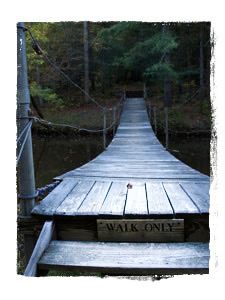Read Contemporary Haiku on The Haiku Foundation website. See also Thirteen Ways of Reading Haiku and Further Reading by Michael Dylan Welch.
Join the Haiku Society of America. You’ll get a newsletter, an email bulletin, and one of the oldest literary journals for haiku in English: Frogpond.
Go to a Haiku North America conference. It’s a haiku immersion experience. See Haiku North America 2007 in Winston-Salem and Haiku North America 2019 in Winston-Salem.
Listen to the Haiku Chronicles, a series of podcasts by poets Alan Pizzarelli and Donna Beaver. The goal of this series is to “… provide a better understanding and appreciation of the art of Haiku and its related forms, including senryu, renku, tanka, haibun, and haiga.” The best of these podcasts sound like an informal conversation among good poets such as Alan, Donna, Cor van den Heuvel, Emiko Miyashita, Bruce Kennedy, and others.
Visit The Haiku Foundation website. Click the New to THF button at top right of the home page for an introduction. Respond to writing prompts, dialogues, and information posted on the home page. The Digital Library makes many out-of-print haiku books available online. The Haiku Outside the Box page links to haiku art, music, and films.
Want to browse a collection of haiku-related sites? See Selected Haiku Links, Mark Alan Osterhaus’s page.
Wait . . . there’s a haiku scene in North America? For a brief history of that scene, see the essays by Charles Trumbull, “The American Haiku Movement,” Parts 1 and 2, in the featured essay section of the Modern Haiku website.
Isn’t anyone trying to stay close to Japanese tradition when they write haiku in other languages? Why, yes. See Kigo and Form on the Yuki Teieki Haiku Society web site. See also Seeds from a Birch Tree, 25th Anniversary Edition, by Clark Strand (Monkfish Book Publishing Company, Rhinebeck, New York: 2023).
What about African American haiku, like the haiku of Richard Wright, Sonia Sanchez, and Lenard D. Moore? See the essays by Charles Trumbull, “Black Haiku: The Uses of Haiku by African American Poets,” Parts 1 and 2, in the featured essay section of the Modern Haiku website.
Confused by conflicting advice about haiku? The submission guidelines for The Heron’s Nest summarize some basics about haiku in English.
Exasperated because so many haiku sound the same? Interested in the avant garde? See footnote #5 in “What’s a Haiku?” on this site. See Scott Metz’s blog post about Gendai Haiku.
Tired of people who make haiku seem impossibly difficult? See the How to Haiku essays by Jane Reichhold.
What’s up with one-line haiku? See Reading One-Line Haiku with Kat and Robin: Multiple Breaks and Multiple Readings.
For Students
The Education Resources section of The Haiku Foundation website offers resources for teachers of all educational levels.
Millikin University Haiku is a site maintained by college students at Millikin University. Their advisor is Dr. Randy Brooks, the founder of Brooks Books, a distinguished haiku press
In the moonlight a worm includes lesson plans for teaching primary and secondary students how to write haiku.

